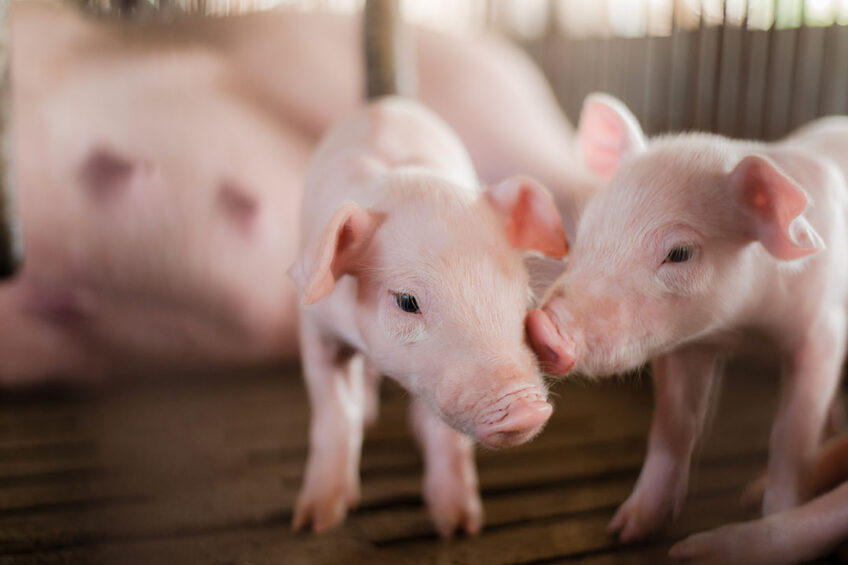Preventive measures to reduce PWD in piglets

Post-weaning diarrhoea (PWD) is a significant gastrointestinal disease in piglets, traditionally tackled with antibiotics and medicinal zinc oxide. However, with the ZnO ban slowly impending other strategies need to be investigated to reduce the condition.
During the last two decades, there has been a general agenda aimed at reducing the use of antibiotics in pig production. With the ban of medical ZnO from June 2022, this has received extra attention due to the risk of an increased antibiotic usage to combat post-weaning diarrhoea (PWD). As a result, the search for strategies to prevent PWD without using medical ZnO and with minimal use of antibiotics has been intensified.
Many strategies are being investigated, including management, and feeding strategies. Although management undoubtedly has great impact, that will not be addressed in this article. An important aspect to consider when reviewing studies on strategies to reduce PWD is that diarrhoea is observed in far from all studies, e.g., differences in faecal score are found but often without reflecting diarrhoea. The studies include other response parameters related to gut health to support a possible effect on PWD. Furthermore, a low number of animals is often used.
Different strategies, different benefits
Some of the strategies considered to prevent PWD are reducing dietary crude protein (CP) and addition of organic acids. These strategies are therefore recommendable, but because they are already used at present, where medical ZnO is still in use, it can be speculated what their effect will be after the ban of medical ZnO; they are expected to be beneficial, but the magnitude of the effect may vary. Although several studies, following the animals a few weeks post-weaning, show reduced growth due to low dietary CP levels, it seems that growth performance is not necessarily affected when considering the entire life span. However, to avoid detrimental effects on performance, it is important to optimise the CP level and the application period in the specific situation. Besides short-chain fatty acids (SCFA), often used in weaner diets, blends of SCFA and medium-chain fatty acids have shown potential beneficial effects, but since there are multiple combinations and forms of these compounds, it calls for further investigation to assess their effectiveness. Regarding fibre, a general recommendation is to use moderate levels of insoluble fibre sources immediately post weaning, followed by inclusion of higher amounts of soluble and fermentable fibre later on; however, inconsistent results have been found. Stimulating feed intake before weaning is generally considered a tool to ameliorate anorexia post weaning and thereby PWD. It is not clear what the optimal feed amount consumed should be, though, and it has even been suggested that stimulating the animals to use a feeder (even with no significant effect on intake) could, have a positive impact on the weaning transition.
Other strategies reported to have beneficial effects include:
Probiotics have shown positive results, especially lactic acid bacteria and yeasts, and are considered as gut microbiota stabilisers; however, observed effects on PWD are often marginal.
Among antimicrobial plant compounds, tannins seem promising, though palatability and their activity as antinutritional compounds can be an issue. Essential oils have shown potential for reducing PWD but are often studied in combination with organic acids (in particular benzoic acid), complicating evaluation of the essential oil per se. Using blends of different plant compounds may be a way of reducing the concentration of the individual compounds, thus avoiding dose-dependent negative effects, as well as potentially obtaining positive synergistic effects.
Dietary supplementation with macroalgae-derived polysaccharides such as fucoidan and, specially, laminarin holds promising. However, effects are lost when offered in combination, and supplementation with intact macroalgae has been less successful, both suggesting potential antagonistic effects between macroalgae-derived compounds.
More research and development needed
Newer strategies like antimicrobial peptides, phages and vaccines all show potential but need further development and research. Regarding vaccines, Coliprotec F4/F18 has shown to be an effective live oral vaccine in cases of PWD caused by the predominant types of ETEC. Due to their potential ability to protect against a range of ETEC and not only F4/F18 positive strains, the so-called multiepitope fusion antigen parenteral vaccines seem interesting. With regard to developing new dietary strategies, more in depth knowledge on the interaction between the enteric microbiome, the nutrition and the pig is urgently required. The newly granted Pig-Paradigm project aims to provide new approaches needed to prevent antibiotic resistance spread.






